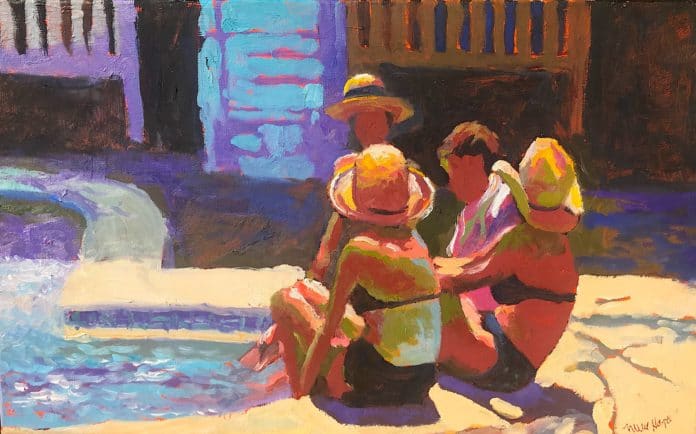Inspiration for Artists > 75-year-old artist Mike Hoyt shares how he was driven to begin oil painting 25 years ago, why he hasn’t stopped since, and what he has learned along the way.
BY MIKE HOYT
(www.lastgaffe.com)
Caution: While I have tried hard not to be self-serving or overly introspective in these writings, this time I probably crossed the line. With apologies, in this piece I have tried to address some questions I get from friends, collectors, and other artists, which boil down to “Why are you so serious about art, and why don’t you get over it?” The answer is, I can’t. And here’s why.
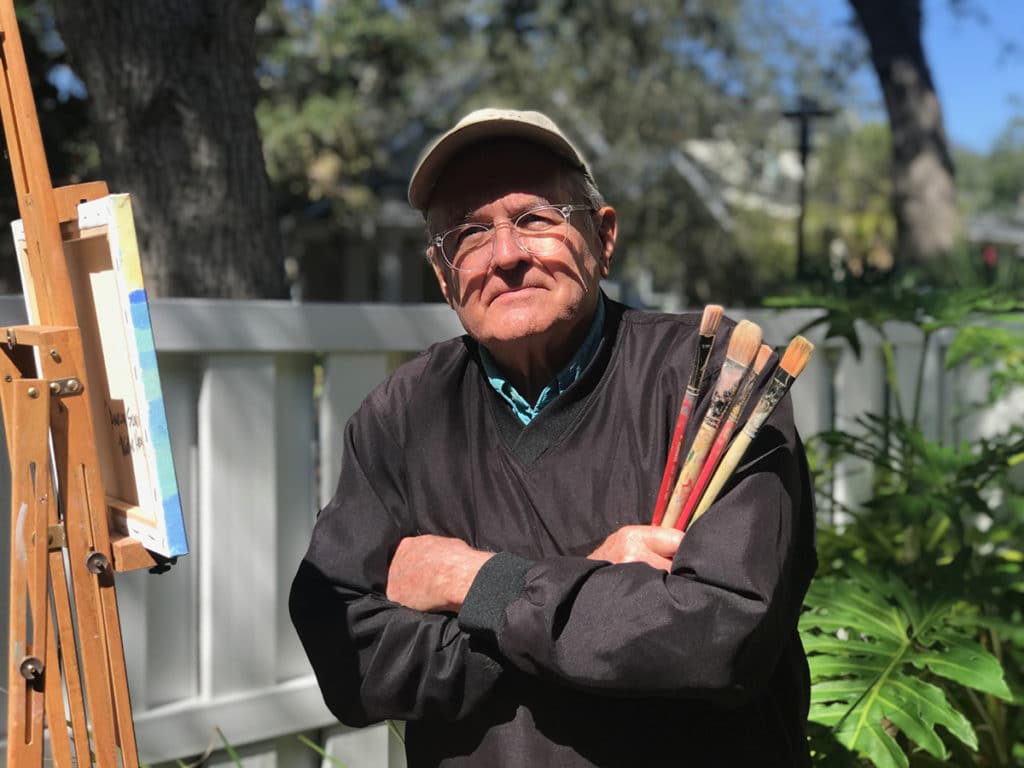
About 25 years ago, give or take, I decided I wanted to be an oil painter. I have no idea why, but it was a huge uncertain step in my life then. And now.
I got funny looks like “Oh this is a passing middle-age phase.” “He’ll find something more useful to do.” “Maybe he’ll get back to his senses.” None of these things happened, and I’m mostly glad.
Becoming an artist is like anything you decide you want to set your sights on. Golf. Writing. Travel. You need to walk gently into it. You must vow to stick with it. And, this, to me, is the key: You must be willing to learn. Knowledge of something new is hard to come by. Something unnerving. Something scary, maybe.
Scary? When you slap paint on a big, empty stretched canvas and hang it in a gallery or at an art show for people to see, you’re hanging part of your soul up there.
Look, I’m no Winslow Homer, but I like to believe that over time and many lessons and hundreds of bad paintings and many instructional books my work has gotten better. It took years for me to admit to myself, and others, “I’m an artist.” I am still embarrassed to say it. But at least I can conjure up enough “good” paintings to no longer be timid and embarrassed.
I never stop being amazed, though, that people will pay as much as they do for my paintings and how totally unpredictable it all is. Some paintings just hang there and never sell. Others that I consider clunkers are scooped up in short order. Go figure.
So how’d I get to this place? A question I ask myself almost every day and other artists often ask me and I ask them. I don’t have a pat answer, but I have a few random ideas. Here they are:
All creative work has value in the eye of the beholder. One of the hardest things for artists to do, especially beginners, is to price their work for sale. At a certain point in your art career, the market will tell you what people are willing to pay and even if they are willing to pay any money for the work you love to do. There is no golden rule I know of that compels people to like and purchase a painting, but what’s important, in the end, is that they like it.
Some of them have told me that a painting of mine they bought made them “happy.” There is no better compliment.
Painting in a market in Aix-en-Provence one morning years ago, I was approached by a nun who stared at a painting I was working on and then told me, “You paint with your heart, don’t you?” Nothing has ever made me feel better.
So, art critics be damned, and many jurors at fancy art shows, as well. If they knew so much, they’d be standing in front of a canvas themselves. Bottom line: If a painting resonates with you, buy it. Now.
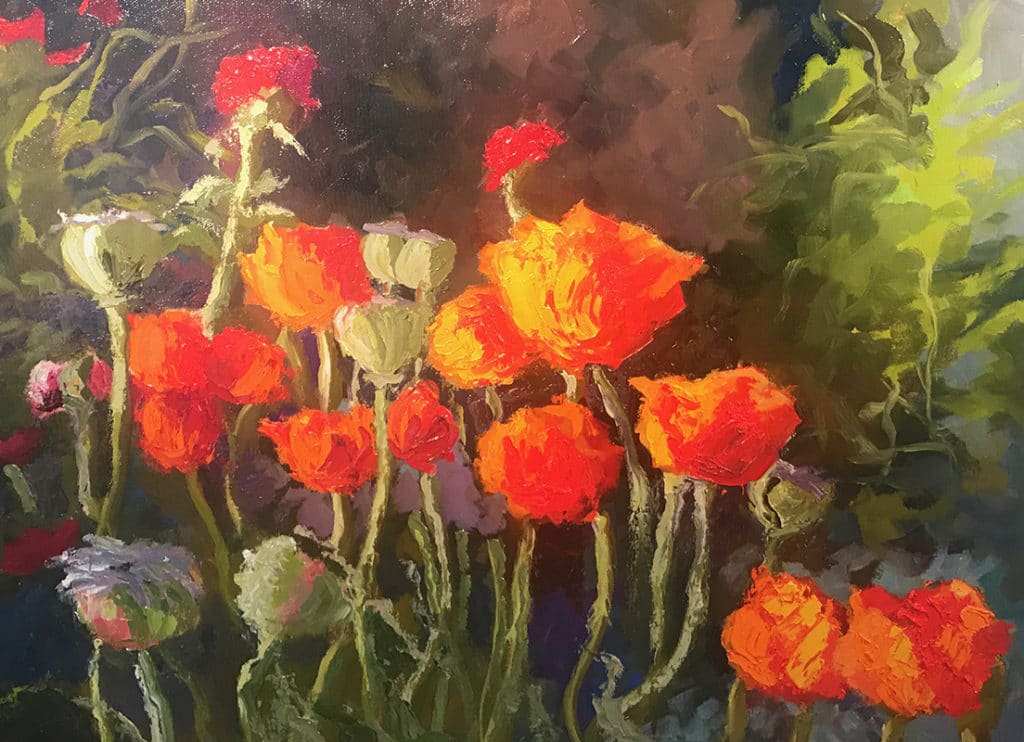
Oil painting is a journey. And it never ends until you die. As long as you can hold a paintbrush and apply paint to a flat surface, you can, and should, paint pictures. In many cases, painters must paint. It is a calling of sorts. Artists are driven to paint. There are pictures in there, in your brain, waiting to get out and you must turn them loose.
Avoid “artspeak” if you can. I know artists of all sorts who love to speak in artsy ways. About how their subjects or canvas “speaks to them.” How colors “direct themselves.” How light and color “vibrate.” Like wine snobs, this sort of gibberish is boring and useless and, as they say in sports, “talk’s cheap.” Or, in the words of Larry the Cable Guy, “git ’er done.” Get in front of a blank canvas and get going; sure, the work itself will take you someplace, but it’s the act that does it, not the words.
Getting better takes work. Lots of it. To improve, you must paint and draw constantly, every day if you can. Carry a sketchbook with you. Frame paintings everywhere you look; they are everywhere from fireplugs to a dog lying in the grass. Think of objects as ways to catch and reflect light and color. Keep your iPhone charged and take photographs: I have close to 3,000 of them in my cloud right now. Have only one rule: Anything that doesn’t run away is the possible subject of a painting. Anything.
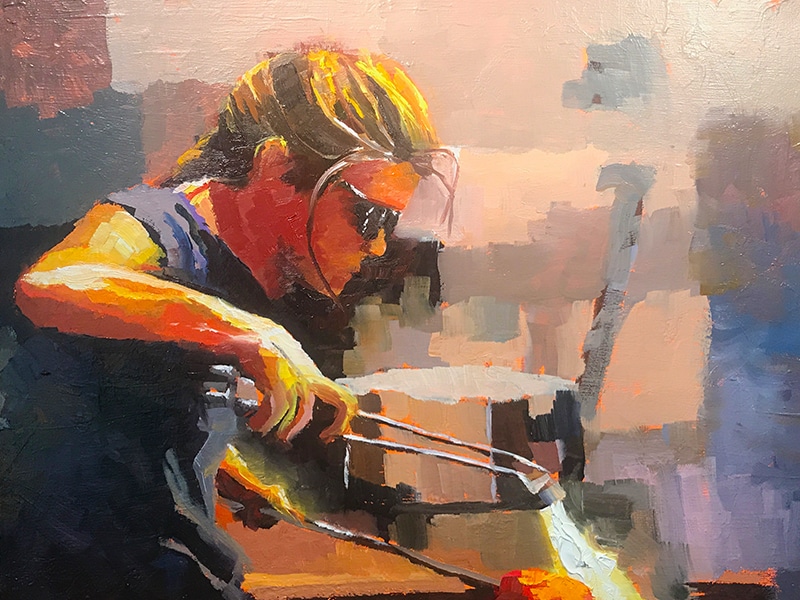
You can’t be afraid to be lonely. Oil painting, any kind of painting, can only be done alone. Oh, you might be in a group of artists in a workshop, but most times you’re going to be all by your lonesome in a studio or in a field someplace. I cannot think of anything more isolating, but when you’re immersed in the painting process it doesn’t matter, so don’t fear these moments. Embrace them.
Paint what makes you happy and only that. On too many occasions, I’ve been jammed into situations where galleries and interior designers, among others, tell you what to paint. Paint big. Paint small. Add a frame. No frame. Match the drapes. Paint a marsh. Paint cows. Paint flowers. Don’t paint flowers. I am a moody artist. I paint what my mood tells me, and this helps dictate color, composition, painting subject, and even size, and it doesn’t make me crazy. I have artist friends who “paint to the market,” to what they think will sell. I’ve done that and the work suffers, and so do I.
Expose yourself to art, in every form. Visit art galleries, art museums, art shows whenever you can. Read art history. Buy art books. Talk to other artists. Take workshops. Watch art videos. Immerse yourself in art, everywhere, all the time. This is the kind of commitment it takes to not only get better, but continually learn and grow.
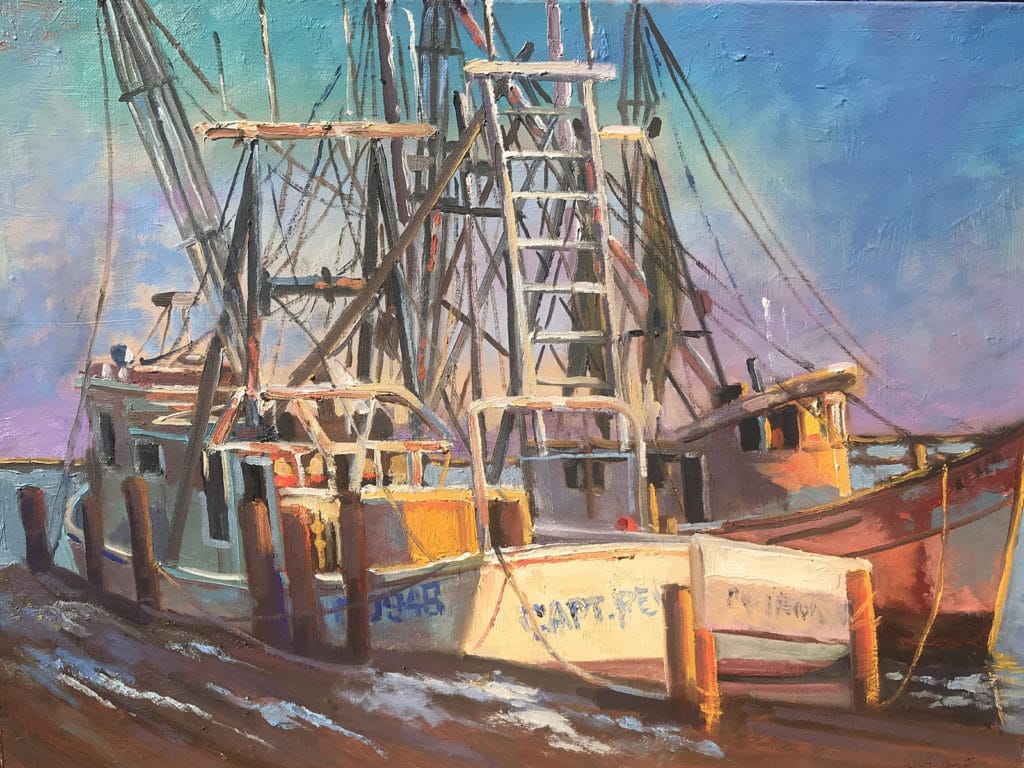
Painting is fun. But it’s work. Being an artist is serious business. When people say to me, “Oh, you’re so lucky that you get to have fun and paint all the time.” Nothing could be further from reality. Yep, it IS fun to paint, but it is also hard, draining work. After most paintings are finished, I am wiped out. You hear athletes tell us that they’ve left “it all on the field.” Artists leave it all on their canvases.
When someone criticizes your work, don’t take it personally. I have learned to learn from criticism. I have found it is mostly intended to be helpful and not directed at the artist. Welcome criticism. Embrace it. It hurts, but it can help you grow.
There are many things to learn. Technical, artistic, and how the art world works. When I teach art classes, students ask me, “How did you mix that color?” I have no earthly idea. It all comes from experience, a LOT of color mixing over the years.There’s absolutely no magic to it; it’s simply experience, doing it a lot, trial and error. When you’ve painted a lot of pictures, the issues of value, hue, intensity, light, and all the other variables begin to fall into place. I learn something new every time I pick up a brush.
Spend time with other artists whenever you can. Particularly those who are better than you are. Like golf, we can learn plenty from those who are more skilled. Watch, listen, be open to new approaches. Always look up, I’ve found, to artists you admire to teach you, if even by suggestion and observation.
Paint every day. Like muscle memory, painting requires repetition. Pick up a brush or a pencil every day and complete a rough drawing, a sketch, a small painting. You will learn something incrementally every time you do.
Never, ever be afraid. Creating art takes courage, lots of it. The best paintings come from times when you aren’t worried about making a mistake. In the end, there are rules in painting, but most can be broken with impunity. Getting it “right” is not the issue; getting it the way you want is the goal.
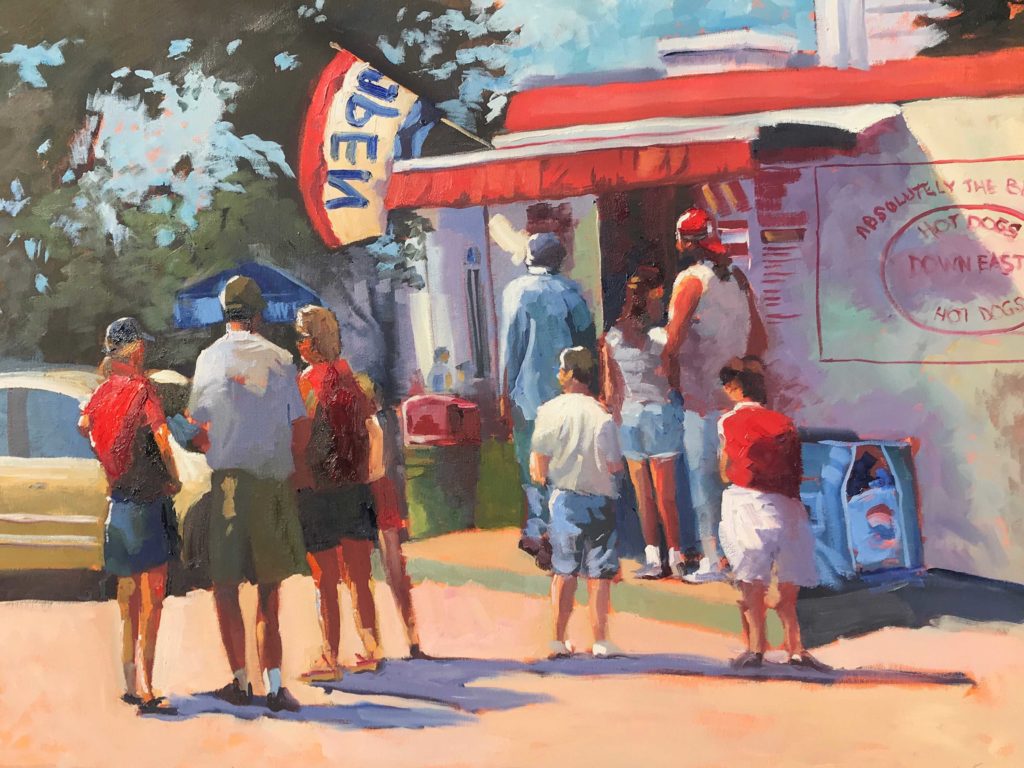
Revisit old work every now and then. If you’ve followed these suggestions, over time you will end up with a ton of paintings. Some are good, some not so good. You can learn from past works because they are a gauge as to how you’re doing, how you’re growing as a painter. I’ve had people who have bought paintings of mine from years ago express the concern, “You’ve changed your style.” If I haven’t, I’m not growing. Older works inform that progress.
Be grateful for any talent you’ve been given. At the end of the day, each of us is blessed with some talent. Whether you can dunk a basketball, or write a poem, or paint a picture, each of us has some unique, God-given ability to do something special, to excel. I believe that creative talent comes from the same place. Not only the ability, but the drive to do it. This is not to discourage those who want to try painting as a hobby, but you’ll know, you’ll sense if “you’ve got it” or not. This should in no way take away from the sheer joy of creating a painting, just as my ability to not hit a decent golf shot doesn’t obscure the fun of trying. I will never be Tiger Woods or Claude Monet, but I’m sure going to keep trying. The latter, that is.
So there you have my unsolicited and self-indulgent views on the strange and obscure quest to be an artist. It is essential to understand that, above all, becoming good at anything demands hard work, an unquenchable search for knowledge, and an ability to accept failure and move on.
The journey is wonderful, even if you never reach the end of the road, however you define it.
Upcoming travel and art events with Streamline Publishing:
> Click here to subscribe to the free newsletter, Plein Air Today
> And click here to subscribe to PleinAir Magazine so you never miss an issue!

